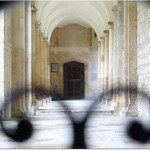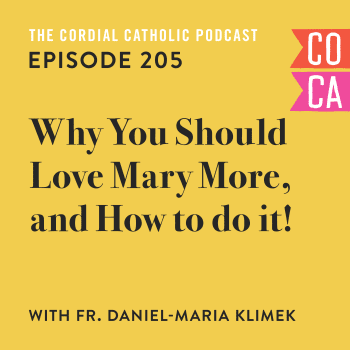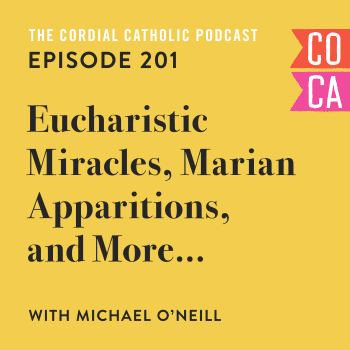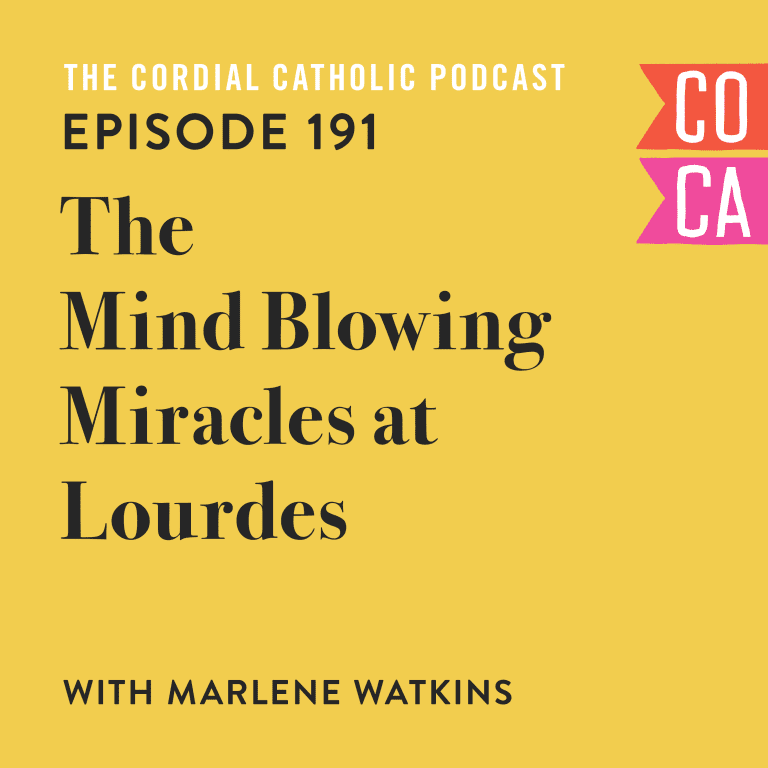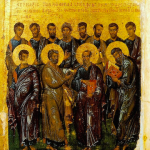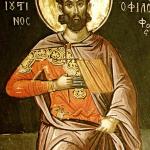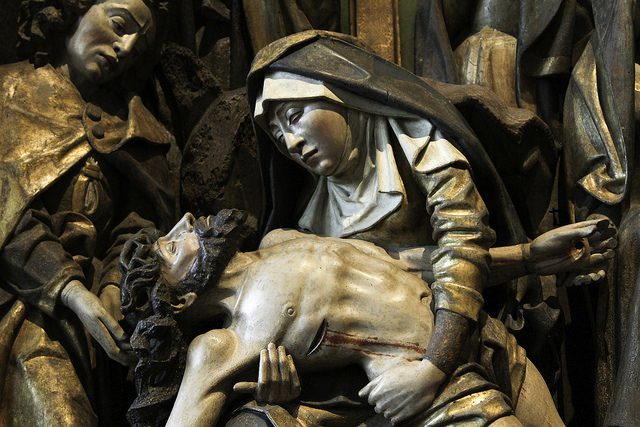
Father Gabriele Amorth is a fascinating man. Until very recently, the elderly Italian priest served as one of Rome’s chief exorcists. As an exorcist he’s seen it all. For our benefit, he’s recorded it too in a couple of books called An Exorcist Tells His Story and An Exorcist: More Stories
.
He’s an interesting guy and I’ve always had a passing interest in the supernatural, even before becoming a Christian, and in the existence of demons, even before my journey into the Catholic Church so naturally I was drawn to Amorth’s work.
But something in his writings bothered me, deeply, as a Protestant.
Amorth made a point of highlighting Mary’s involvement in exorcisms: There was something about Mary.
For me, as a Protestant, there was something there that just didn’t add up.
The Catholic Church believes in the Communion of Saints. Deceased Christians, the Church tells us, don’t cease to be Christians when they die. They don’t go off somewhere into the corner of Heaven but instead, as pictured in the Book of Revelation, gather around the altar in Heaven and send up our prayers, with their prayers—they pray for us. And while this might sound radical to Protestant Christians it was actually the belief of the whole Church since the very earliest written records, and can be traced back to the most ancient of Christian traditions.
The locations of the deaths of both Peter and Paul were revered, from very early on, as important places.
Today they remain so, as Roman Catholic Churches.
It was the belief of the early Christian Church, and remains the belief of the Catholic and Orthodox churches, that deceased Christians don’t cease to be part of the Body of Christ but remain essential. They can pray for us in the same way we Christians, on earth, can pray for each other.
That said, what about Mary? Well, likewise, for most of the history of Christianity Mary was viewed with incredible importance. After all, she is the Mother of God, and her “yes” to God—her decision to work as part of the divine plan for salvation—brought about redemption for the entire human race. She’s important, clearly. And if Christians, after they die, continue to act as part of the Body of Christ and continue to pray for us, on our behalf, then of course Mary can play an important role in Heaven, too.
Catholic theology, therefore, comes to a simple conclusion: Deceased Christians continue to pray for us and act as the Body of Christ. Mary is a deceased Christian. Mary continues to pray for us and act as part of the Body of Christ.
So where does Mary come into the exorcism?
Exorcism, in the Catholic Church, is a rite with prescribed actions, liturgy, and gestures. The prayers, primarily, focus on recalling to the possessed person the power of the name of Christ. It’s extremely biblical in the language it uses—phraseology modeled on exorcisms performed by Jesus and the apostles. There are also appeals to particular saints and angels, too.
As a Protestant, I could stomach references to angels and even, to a degree, some of the saints, but what particularly shook me about Amorth’s accounts of several of his exorcisms was the presence and power of Mary.
Now I’ve written elsewhere, in regards to some of the more prominent Marian miracles, of Jesus’s principle of a divided house. I think it applies here, too. A house cannot be divided against itself. Satan cannot drive out Satan. Bear this in mind, because when a demon trembles at the name of Mary, doesn’t it follow that it must be Mary the demon is trembling at?
One of Amorth’s accounts that really bothered me went like this.
During a particularly challenging exorcism, the demon-possessed individual suddenly began screaming out. In their pain, the demon, speaking through the individual, agonized over the searing pain and light they were experiencing, “She’s here, she’s here!” the possessed individual—who was otherwise psychologically healthy—was screaming and explained it was Mary and it was her light that the demon could not bear.
There, in the exorcism, Mary, Mother of God, came to pray for the possessed individual and the demon responded.
In fact, it hurt the demon to be that close to her.
That got my attention. And reading this encounter as a Protestant I was struck by the fact that if a demon responded like that, to Mary, what was I to make of it?
What is the Protestant response?
I did not have one, and it bugged me.
Amorth highlighted several other exorcism encounters which featured Mary. Enough, I thought, to make me begin to become concerned. Enough encounters, at least, to challenge my thinking.
Why are demons so afraid of Mary?
As a Protestant, I believed she was important but that she was also dead. She couldn’t pray for me, and I shouldn’t be asking her to either.
But demons respond to Mary. Her name. And when she’s prayed to, in at least several of the encounters Amorth records, she makes herself present, and she prays for the possessed. And the demons hate it.
Like the famous wedding at Cana where Mary asks Jesus to perform a miracle and He does, in these recorded exorcisms it seems a similar thing is taking place—and that’s worth taking note of.
And here’s the conclusion I reached.
Either, Father Gabriele Amorth is a liar, or crazy, or there’s something about Mary. Either Amorth is making it all up, or there’s something about the Catholic doctrine of the Communion of Saints and the important place of Mary in everlasting Body of Christ and it’s played out in the fact that demons respond to Mary. They can do nothing else.
This, I thought, as a Protestant, was an interesting angle on Catholic doctrine. An interesting, and ironic, proof of the reality of Catholic beliefs. Demons proving Marian theology and the Communion of Saints? Well, it would seem so. As a Catholic that would make a lot of sense.
As a Protestant, I was stumped.
This article was originally published in a modified version on my personal website as “Why Demons So Afraid of Mary?”.
Stay in touch! Like The Cordial Catholic on Facebook:


